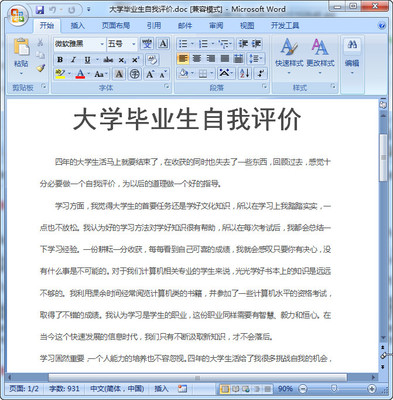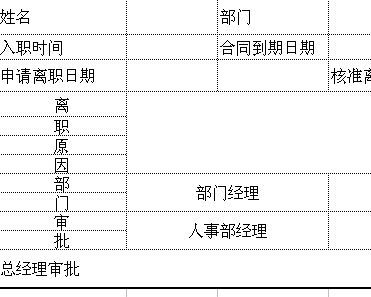文章作者Paul T. P. Wong, Ph.D., C.Psych. (Research Director, GraduateProgram in Counselling Psychology. Trinity Western UniversityLangley, BC, Canada).
题为:How to Write a ResearchProposal.全文转载如下:
Most students and beginning researchers do not fully understandwhat a research proposal means, nor do they understand itsimportance. To put it bluntly, one’s research is only as a good asone’s proposal. An ill-conceived proposal dooms the project even ifit somehow gets through the Thesis Supervisory Committee. A highquality proposal, on the other hand,not onlypromises success for the project, but also impresses your ThesisCommittee about your potential as aresearcher.
A research proposal is intended to convince others that you havea worthwhile research project and that you have the competence andthe work-plan to complete it. Generally, a research proposal shouldcontain all the key elements involved in the research process andinclude sufficient information for the readers to evaluate theproposed study.
Regardless of your research area and the methodology you choose,all research proposals must address the followingquestions:What you plan toaccomplish, why you want to do it and how you are going to doit.
The proposal should have sufficient information to convince yourreaders that you have an important research idea, that you have agood grasp of the relevant literature and the major issues, andthat your methodology is sound.
The quality of your research proposal depends not only on thequality of your proposed project, but also on the quality of yourproposal writing. A good research project may run the risk ofrejection simply because the proposal is poorly written. Therefore,it pays if your writing is coherent, clear andcompelling.
This paper focuses on proposal writing rather than on thedevelopment of research ideas.
Title:
It should beconcise anddescriptive. For example, the phrase, “An investigation of .. .” could be omitted. Often titles are stated in terms of afunctional relationship, because such titles clearly indicate theindependent and dependent variables. However, if possible, think ofan informative but catchy title. An effective title not only pricksthe reader’s interest, but also predisposes him/her favourablytowards the proposal.
Abstract:
It is a brief summary of approximately 300 words. It shouldinclude theresearch question,the rationale for the study, the hypothesis (if any), the methodand the main findings.Descriptionsof the method may include the design, procedures, the sample andany instruments that will be used.
Introduction:
The main purpose of the introduction is to provide the necessarybackground or context for your research problem. How to frame theresearch problem is perhaps the biggest problem in proposalwriting.
If the research problem is framed in the context ofageneral, rambling literature review,then the research question may appear trivial anduninteresting.However, if the samequestion is placed in the context of avery focused andcurrent research area, its significance will becomeevident.
Unfortunately, there are no hard and fast ruleson how to frame your research question just as there is noprescription on how to write an interesting and informative openingparagraph. A lot depends on your creativity, your abilitytothink clearly and the depth of yourunderstanding of problemareas.
However, try to place your research question in the context ofeither acurrent “hot” area,or an older area that remainsviable.Secondly, you need to provideabriefbut appropriate historical backdrop. Thirdly, provide thecontemporary context in which your proposed research questionoccupies the central stage. Finally,identify “key players” and refer tothe most relevant and representative publications. In short,try to paint your research question in broad brushes and at thesame time bring out its significance.
The introduction typically begins with a general statement of theproblem area, with a focus on a specific research problem, to befollowed by the rational or justification for the proposed study.The introduction generally covers thefollowingelements:
1. Statetheresearch problem, which isoften referred to as the purpose of thestudy.
2. Provide thecontext and set thestagefor your research question in such away as to show its necessity andimportance.
3. Present the rationale of your proposed study and clearlyindicatewhy it is worthdoing.
4. Briefly describe themajor issues andsub-problemsto be addressed by yourresearch.
5. Identify the keyindependent anddependent variablesof your experiment.Alternatively, specify the phenomenon you want tostudy.
6. State yourhypothesis ortheory, if any. For exploratory or phenomenologicalresearch, you may not have any hypotheses. (Please do not confusethe hypothesis with the statistical nullhypothesis.)
7. Set the delimitation or boundaries of your proposed researchin order to provide aclearfocus.
8. Provide definitions ofkeyconcepts. (This is optional.)
LiteratureReview:
Sometimes the literature review is incorporated into theintroduction section. However, most professors prefer a separatesection, which allows a more thorough review of theliterature.
The literature review serves several importantfunctions:
1.Ensuresthat you are not “reinventing thewheel”.
2. Gives credits to those who have laid the groundwork for yourresearch.
3. Demonstratesyourknowledgeof the researchproblem.
4. Demonstratesyourunderstandingof the theoretical andresearch issues related to your researchquestion.
5. Shows your ability to critically evaluate relevant literatureinformation.
6. Indicates your ability to integrate and synthesize theexisting literature.
7. Providesnew theoretical insights or developsa new model as the conceptual framework for yourresearch.
8. Convinces your reader that your proposed research will make asignificant and substantial contribution to the literature (i.e.,resolving an important theoretical issue or filling a major gap inthe literature).
Most students’ literature reviewssuffer from the followingproblems:
* Lacking organization and structure
* Lacking focus, unity and coherence
* Being repetitive and verbose
* Failing to cite influential papers
* Failing to keep up with recentdevelopments
* Failing to critically evaluate citedpapers
* Citing irrelevant or trivial references
* Depending too much on secondary sources
Your scholarship and research competence will be questioned ifany of the above applies to your proposal.
There are different ways to organize your literaturereview.Make use of subheadings to bringorder and coherence to your review.Forexample, having established the importance of your research areaand its current state of development, you may devote severalsubsections on related issues as: theoretical models, measuringinstruments, cross-cultural and gender differences,etc.
It is also helpful to keep in mind that you are telling a storyto an audience. Try to tell it in astimulating and engagingmanner.Do not bore them, because it maylead to rejection of your worthy proposal. (Remember: Professorsand scientists are human beings too.)
Methods:
The Method section is very important because it tells yourResearch Committee how you plan to tackle your research problem. Itwill provide your work plan and describe the activities necessaryfor the completion of your project.
The guiding principle for writing the Method section is that itshould contain sufficient information for the reader to determinewhether methodology is sound. Some even argue that a good proposalshouldcontain sufficient details foranother qualified researcher to implement thestudy.
You need to demonstrate your knowledge of alternative methodsandmakethe casethat your approach is themostappropriate and mostvalidway to address your researchquestion.
Please note that your research question may be best answered byqualitative research. However, since most mainstream psychologistsare still biased against qualitative research, especially thephenomenological variety, you may need to justify your qualitativemethod.
Furthermore, since there are no well-established and widelyaccepted canons in qualitative analysis, your method section needsto be more elaborate than what is required for traditionalquantitative research. More importantly, the data collectionprocess in qualitative research has a far greater impact on theresults as compared to quantitative research. That is anotherreason for greater care in describing how you will collect andanalyze your data. (How to write the Method section for qualitativeresearch is a topic for another paper.)
Forquantitative studies, themethod section typically consists of the followingsections:
1. Design -Is it a questionnaire study or a laboratoryexperiment? What kind of design do youchoose?
2. Subjects or participants - Who will take part in your study ?What kind of sampling procedure do you use?
3. Instruments - What kind of measuring instruments orquestionnaires do you use? Why do you choose them? Are they validand reliable?
4. Procedure - How do you plan to carry out your study? Whatactivities are involved? How long does ittake?
Results:
Obviously you do not have results at the proposal stage. However,you need tohave some idea about what kind ofdata you will be collecting,andwhatstatistical procedureswill be used inorder to answer your research question or test youhypothesis.
Discussion:
It is important to convince your reader ofthepotentialimpactof your proposed research. You needto communicate a sense of enthusiasm and confidence withoutexaggerating the merits of your proposal. That is why you also needto mention thelimitations andweaknessesof the proposed research, whichmay be justified by time and financial constraints as well as bythe early developmental stage of your researcharea.
Common Mistakes in Proposal Writing
1. Failure to provide the proper context to frame the researchquestion.
2. Failure to delimit the boundary conditions for yourresearch.
3. Failure to cite landmark studies.
4. Failure to accurately present the theoretical and empiricalcontributions by other researchers.
5. Failure to stay focused on the researchquestion.
6. Failure to develop a coherent and persuasive argument for theproposed research.
7. Too much detail on minor issues, but not enough detail onmajor issues.
8. Too much rambling — going “all over the map” without a clearsense of direction. (The best proposals move forward with ease andgrace like a seamless river.)
9. Too many citation lapses and incorrectreferences.
10. Too long or too short.
11. Failing to follow the APA style.
12. Slopping writing.
下面是来自其他一些学术从业者关于如何写proposal的意见:
* Writing Research Proposals, Drew University On-line resourcesfor writers.
* Guide to Writing a Research Proposal, University ofTechnology, Sydney. (A research proposal is required for admissionto the program.)
* Beginners Guide to the Research Proposal, University ofCalgary Centre for Advancement of Health.
* The Art of Writing Proposals: Some Candid Suggestions forApplicants to Social Science Research Council Competitions, AdamPrzeworski and Frank Salomon.
* The Elements of a Proposal, Frank Pajares, EmoryUniversity.
以及,关于如何写学位论文proposal的指导(Dissertation Proposal Writing and somestrategies for completing the dissertation)
* Dissertation Proposal Workshop, Institute of InternationalStudies, UC-Berkeley.
* Writing and Presenting your Thesis or Dissertation ,LearningAssociates.net.
* Dissertation/Project Hints: Proposal Writing, Hazel Hall,School of Computing, Napier University, Edinburgh,UK.
* Writing Theses and Dissertations, Claremont GraduateUniversity Writing Center.
 爱华网
爱华网



